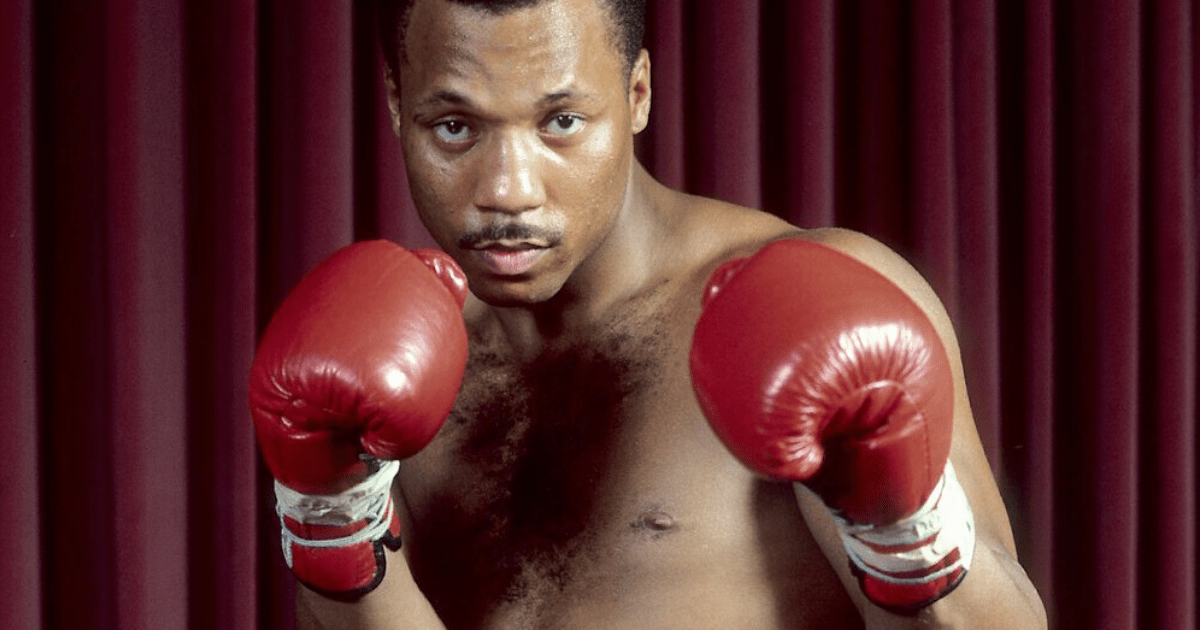PINKLON THOMAS is the heavyweight who became champion while battling heroin addiction and was credited as Mike Tyson’s hardest fight.
Thomas won the WBC title in 1984, having had just THREE amateur bouts, and also fought Evander Holyfield and Riddick Bowe in is career.
Former heavyweight champion Pinklon Thomas
But he admits his hardest opponent was himself, having fought substance abuse during the peak of his career.
Thomas was born in Pontiac, Michigan and was not raised with his two sisters in poverty.
Instead, Thomas was drawn to a life of crime on his own and before his teenage years he was using drugs.
He told The Ring: “I chose to go to the projects, I wasn’t from the projects, I chose the lifestyle. I was an athlete in elementary school.
“By the time I was in seventh grade I was shooting heroin. I got caught up early.
“I was hanging out with older guys because I was bigger than guys I went to school with.”
Thomas first tried heroin when he was 12 years old and by 14 he had a $150-a-day (£125) habit. He was then kicked out of school at 15.
As a result, he reverted to a life of crime in order to fund his drug addiction.
Thomas revealed: “I did a lot of crazy things to get money. I did what I had to do for my habit.
“I did things against the law – armed robbery, cleared out cash registers, snatched money. I did all kinds of crazy stuff.”
Thomas was just 17 he got married and soon after his wife joined the army but his own application was declined.
Although after his wife fell pregnant, she received honourable discharge and the couple settled in Seattle.
Thomas was later evicted from his home for failing to pay the rent and was forced to live in public housing.
It was there he began bragging about being professional boxer – despite never trying the sport before.
He was then invited to the local gym and recalls: “I had just shot some heroin and cocaine speedball.
“They had told the trainer, Joe West, the same lie I had told them. He told me he wanted me to hit the bag.
“I didn’t know if I was right-handed or left-handed, and after three or four minutes I ran out the door and threw up everywhere.”
Thomas would go on to have just three amateur bouts, winning two, before turning pro in 1978.
And he later linked up with Muhammad Ali’s former coach Angelo Dundee, meaning he rubbed shoulders with The Greatest.
Thomas told Pro Boxing Fans: “Because Angelo was affiliated with Ali, and Ali was around a lot I learned a lot from him too.
“Angelo would always bring me to different functions that was going on with Ali and I would watch what he would do.”
Thomas, with Dundee in his corner, won the title after beating American Tim Witherspoon.
Pinklon Thomas beat Tim Witherspoon for the WBC title
He said: “I never dreamed I could reach that level, I never even set a goal. It was the greatest accomplishment of my life at that time.”
But following just one successful defence, Thomas lost the belt to Trevor Berbick in 1986.
In the same year, Tyson knocked out Berbick aged 20 to become the youngest heavyweight champ of all time – a record which still stands.
Thomas had three confidence-building wins before he challenged Tyson, but was beaten in six rounds.
Amazingly, Tyson “didn’t impress” him as he claimed: “It was just unfortunate that six weeks before the fight I had a shoulder injury.
“I figured my experience with the left jab [would help me win] ‘cause I didn’t have a right hand ‘cause of the shoulder.
“I did well for two rounds, then the glove split. It took about nine minutes and 40 seconds to get me another glove which gave him time to rest.”
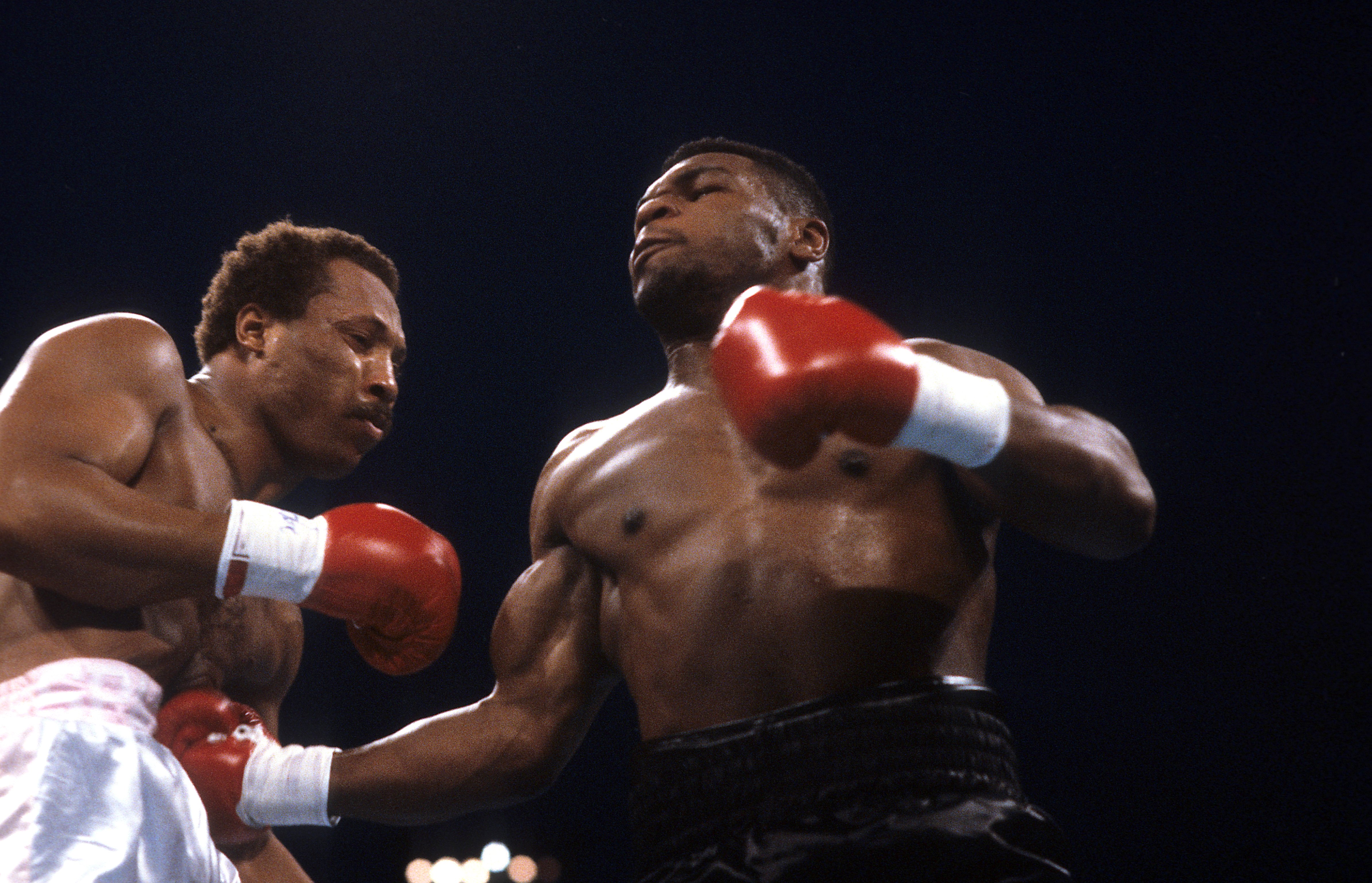
Mike Tyson beat Pinklon Thomas in 1987
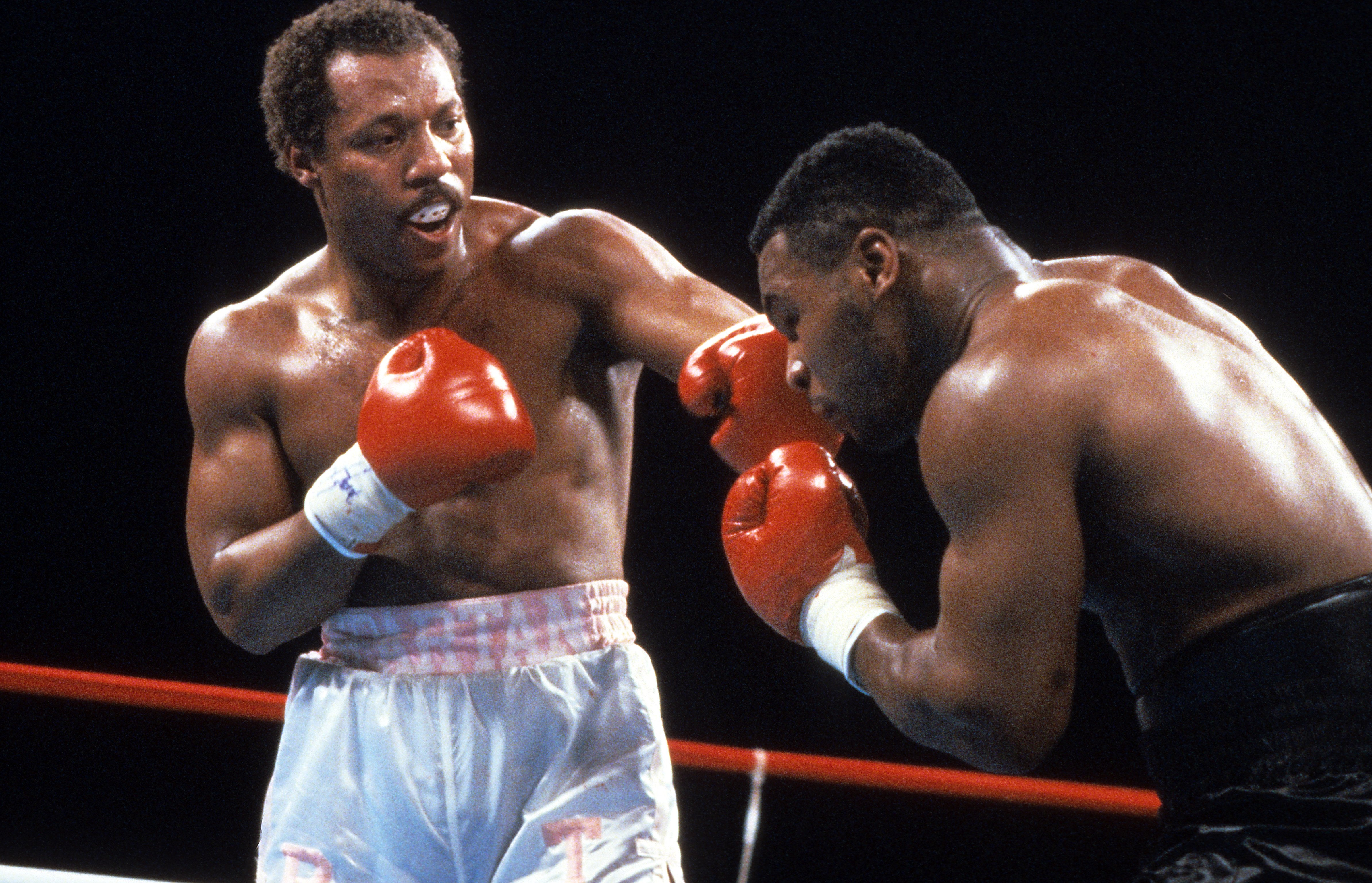
Pinklon Thomas was Mike Tyson’s hardest ever fight
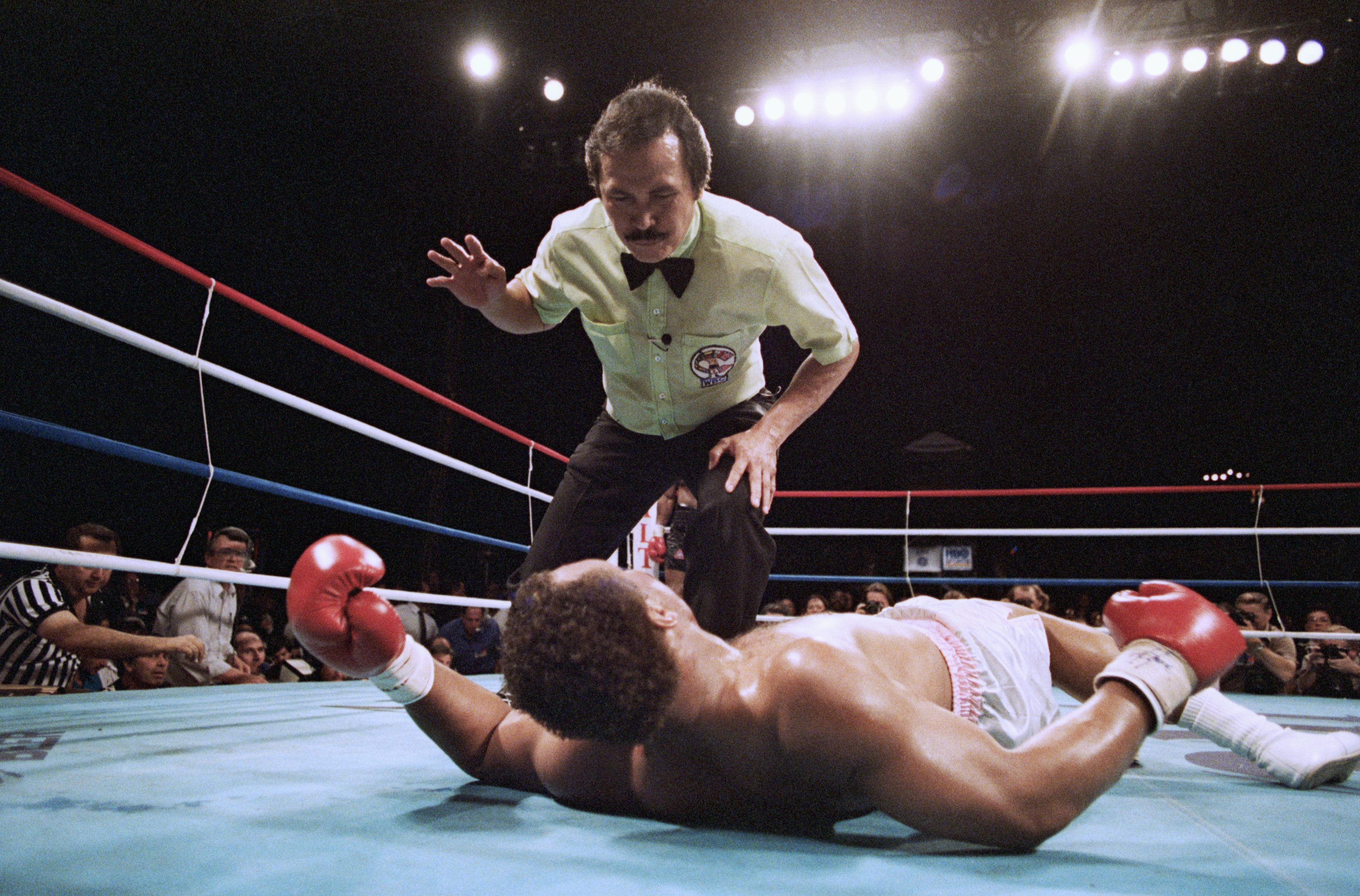
Pinklon Thomas was knocked out in round six by Mike Tyson
On the contrary, Tyson named Thomas as the hardest fight of his career, telling History Bites: “He was my toughest opponent.
“I never thought him, but two years ago I watched the tape of him, a friend of mine told me to watch it.
“I hit him with seventeen punches, flat, on the face, he went down but it was seventeen punches.
“Seventeen punches, flush, all of them were as hard as they could be and the last one he just passed out.
“I thought ‘God, that is my toughest fight, he took seventeen on the chin!’”
Thomas went on to face Holyfield the year after, losing in seven rounds in what was his first fight off drugs.
He said: “My toughest opponent was me, myself, because of the drug addiction and stuff I did.
“I was still using at the time that I was fighting all of those guys until I fought Evander Holyfield in ’88. Then I went to treatment and I got in recovery by 1989.
“So, I was my worst enemy, my toughest opponent and that’s just no joke, it’s no lie. I honestly am just saying what I feel.
“I get asked that question all the time sometimes I would say it was different fighters but to be honest with you, man, I was my own toughest opponent, a dummy and I made some crazy decisions.”
Thomas faced ex-champions Bowe and Tommy Morrison, losing both, before having 14 more lower-level bouts.
He won all of them bar one and that defeat in 1993 to Lawrence Carter spelled the end of Thomas’ career.
In later life, Thomas settled in Florida with his wife and has four children, two with his partner and two from a previous relationship.
He is also a grandfather to five grandchildren and has been clean from all drugs and alcohol for 30 years.
Thomas ran a non-profit organisation called Project P.I.N.K. (Pride In Neighborhood Kids) helping educate and mentor youths.
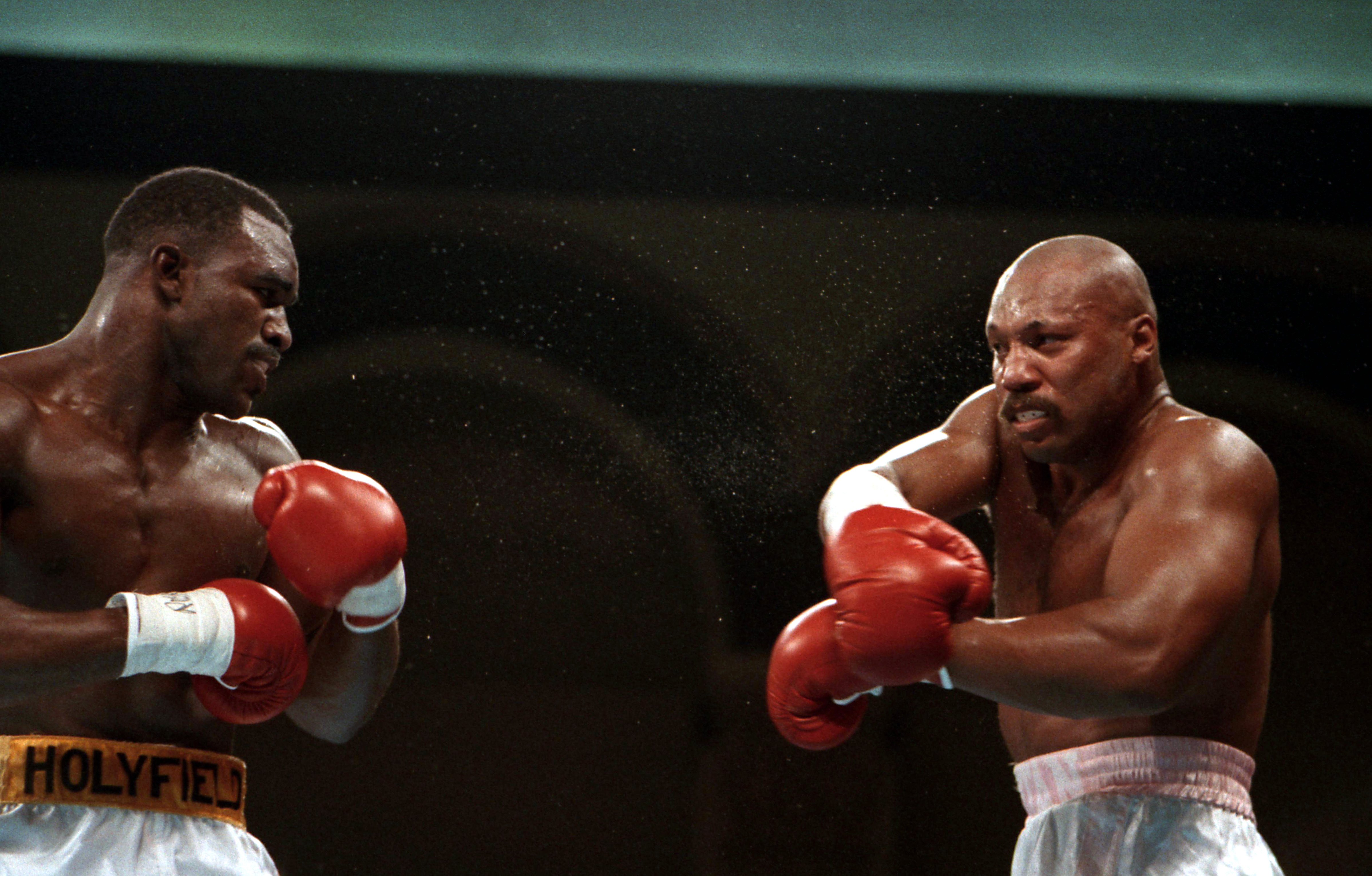
Evander Holyfield against Pinklon Thomas in 1988
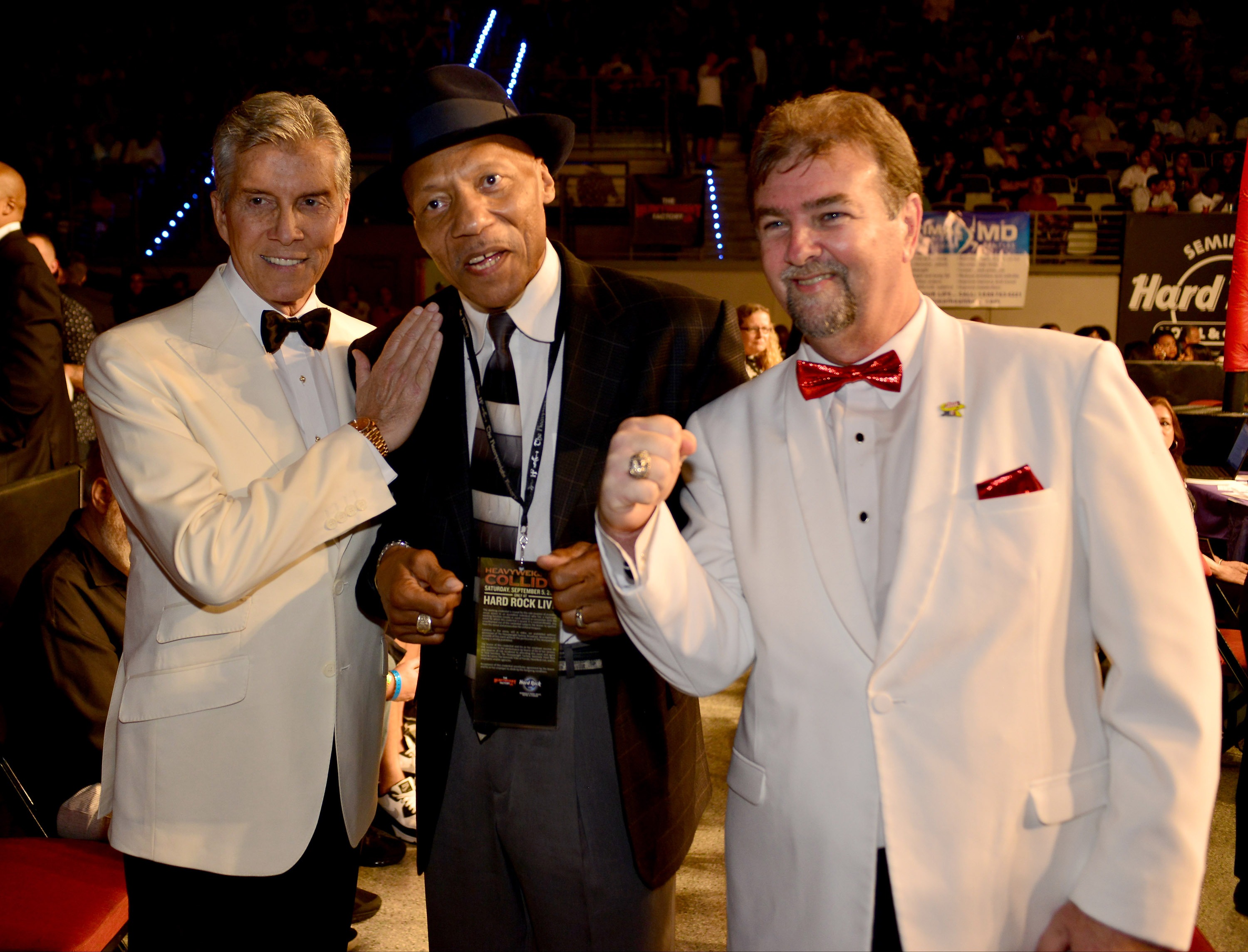
Michael Buffer, Pinklon Thomas and Bob Alexander in 2015
Frequently Asked Questions
What is the difference of a left-hook and a right-cross?
A left-hand hook is thrown on the side of a body while a lateral cross is thrown on the front.
The opponent is facing the back of the left hook. The elbow is bent 90 degrees and the wrist is turned 45 degrees toward the opponent.
A right cross is thrown with the palm facing the opponent’s face and the elbow straight. The wrist is turned 45 degrees away from the opponent.
What are the benefits of learning to box?
These are the reasons you need to learn how box.
- It builds confidence. You will be able to confront bullies and other bullies by learning to box.
- It can improve your health. Boxing builds muscle mass. Muscle mass is what makes you stronger.
- It teaches self defense skills. Learning how to fight is the first step to protecting yourself.
- It improves your mental toughness. When you face challenges, mental toughness is essential.
- This gives you an incredible sense of achievement. When you master a particular technique, it will make you feel like a true fighter.
- It’s fun! Nothing is better than being punched in the stomach.
- It’s cheap. All you need to do is get a pair or boxing gloves.
- It doesn’t take up much space
What is the average time it takes to learn to box.
Boxing can be considered one of the oldest and most well-known martial arts. China recorded the first boxing match in 2200 BC. Boxing has been practiced for thousands of years. Boxing is still a popular sport among celebrities and athletes. It takes around 10 months for a boxer to be proficient.
The reason why it takes so long to learn boxing is because it involves many different types of movements. Each movement requires specific muscles to perform properly. These muscles take time to build.
You can learn how to move your body and then you can begin practicing any type boxing technique. You’ll get better at each technique over time.
How to throw the jab
Here’s a step-by, easy guide on how to throw a jab.
- Move forward with both your feet.
- Move your arm to the top of your shoulder.
- Bring your fist down towards your target.
- After hitting your target, swing your arm backwards.
- Repeat steps 1 through 4.
Statistics
- This article received 39 testimonials and 89% of readers who voted found it helpful, earning it our reader-approved status. (wikihow.com)
- You want to be running at roughly 75-80% of your top speed..5 mile slow, easy recovery jog at the end.[6]X Research source 2Mix in long runs, shadow boxing, and short sprints on non-interval days. (wikihow.com)
External Links
boxandflow.com
amazon.com
- Amazon.com: Ringside Diablo Wrestling Boxing Shoe – Clothing, Shoes & Jewellery
- Amazon.com : Sanabul Boxing Handwraps Elastic 180 inch Red : Sports & Outdoors
How To
Here are the Essential Skills of Boxing
How to effectively box
Boxing is the most loved sport in the world. It consists of two opponents who try to knock out each other’s head. Each country has its own rules. There are three types generally of boxing: Amateur (Professional) and Olympic (Olympic).
Amateur boxing can be practiced at school or college. This form of boxing involves sparring with no protection and using padded gloves. Amateur boxing competitions usually last three rounds and last five minutes each. There are many styles of amateur boxing such as Kickboxing or Muay Thai, Taekwondo and Karate, Judo and Wrestling, among others.
Most professional boxing takes place in gyms, clubs, and stadiums. They are protected by protective equipment like a mouthpiece, nose protector, shinguards, elbow pads and knee pads, waist belt, and groin protection. Professional boxing contests last six rounds and last for four minutes each. There are many styles of professional boxing: Boxing, MMA (Mixed Martial Arts), Kickboxing and Muay Thai.
Olympic boxing can be seen at the Olympics. Special protective gear must be worn by boxers to ensure compliance with international standards. The eight rounds last three minutes each and are held over eight rounds. Olympic boxing can be divided into two types: Light Flyweight (Heavyweight) and Heavyweight (Light Flyweight).
Boxing’s fundamental skills are:
- Punching techniques
- Guarding techniques
- Footwork
- Stance
- Movement of the body
- Defense
- Combination
- Rotation
- Spare parts
Punching Techniques
There are seven types of punches available: Left Hook and Right Hook, Cross, Cross, Straight, Underhand, Overhand, Cross, Straight, Cross, Straight, Cross, Straight, and Overhand. Each punch is different. Some punches require more strength than others. A strong uppercut for example requires a lot of force. However, a straight punch is much more powerful and faster than other punches.
There are also different combinations. These are combinations which combine several punches in order to achieve a specific goal. A combination can contain multiple parts. An example of this is a left hook, followed by a right crossing. This will damage the opponent’s jaw.
Guard Techniques
Boxers use their bodies to defend themselves against attack. He does this using his legs and arms, elbows as well as hands, knees and feet.
Legs
A boxer must use his legs to defend against kicks. After receiving a kick, he will raise his leg and move away from the attacker. To avoid being kicked on the sides, he bends at his knees when the attacker strikes from the front. But if the attack comes in the back, he will stand straight and block the kick using his foot.
Elbows
Elbow strikes are very effective because they inflict much pain. An elbow strike can be delivered either directly or indirectly. Directly means that you hit your opponent with your forearm while indirectly means that you hit him with another part of your arm.
Hands
Boxers use their hands to block incoming blows. They raise their fists high above their heads and point them in the direction of an attack. Then, they touch the attacker’s hand.
Knees
Boxers should bend their knees when receiving blows to the abdomen, stomach, or chest. Knee strikes can be used to defend yourself.
Feet
Boxers should respond to being attacked by their opponent by standing back and delivering counter-attacks. This will help him gain distance from his opponent. Additionally, boxers need to maintain their balance when they counter-attack.
Stances
Boxing effectively requires a boxer to have a good stance. The way he defends him will be dictated by his stance. It determines his position and the direction he will face. Boxers can take many different stances. Here are some of the most common ones:
- Low stance
- High stance
- Southpaw stance
- Western stance
Move your body
Boxers must maneuver around their opponent to win fights. This means changing your speed, position and rhythm.
Rotation
Rotating his arm to increase the puncher’s reach is a key part of boxing. Depending on what punch is being thrown, the speed of rotation varies.
Combinations
The timing of each individual punch affects the effectiveness or failure of a combination. A combination that is effective starts with a strong punch, and ends with one that is weak.
Spare parts
Sparring is an exercise session to improve boxing skills. Boxers learn to train their mind and bodies during sparring sessions. The goal of sparring is to learn to fight, and not to get hurt.
It is important to be patient and dedicated when learning how to box. To become a better boxer, you must train hard and for a long time.

